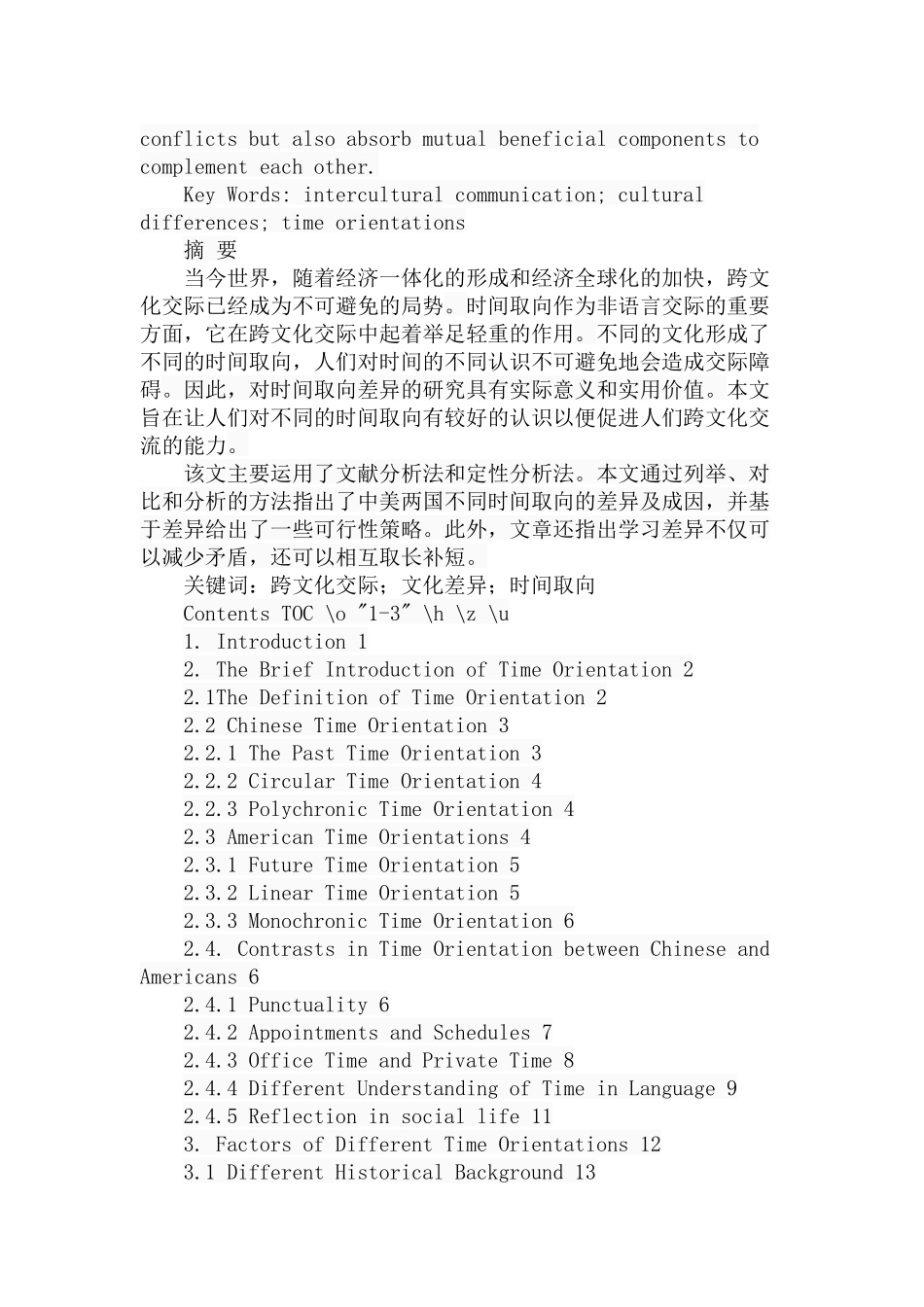AcknowledgementsHow time flies! My four years’ study at Xianyang Normal University will soon be over. Here, I would like to express my sincere gratitude to all the people who have helped me during my college years.My deepest gratitude goes first to Zhang Shasha, my supervisor, for her valuable suggestions and constant guidance on my thesis throughout all the stages. Without her patient assistance and friendly encouragement, it would not be possible for me to complete this thesis in such a short period of time.In addition, my thanks would go to our school library, which provides me with so many useful reference books and collected data.Last, I deeply appreciate the contribution to this thesis made in many ways by my friends and classmates.AbstractNowadays, with the formation of global integration and the acceleration of economic globalization, intercultural communication has become an unavoidable situation. As one of the significant aspects of nonverbal communication, time orientation plays a more and more important role in intercultural communication. Diverse cultures shape different time orientations. Different understanding of the time will inevitably lead to the barriers of people’s communication. Therefore, it has practical significance and utilitarian value to study on time orientation. The paper aims at a better understanding of different time orientations, which can enhance the ability of intercultural communication.This paper is mainly studied through the methods of documentary analysis and qualitative analysis. The paper lists, compares and analyzes the differences and causes of different time orientations between China and America. Besides, the paper gives us some feasible strategies focused on the d...


